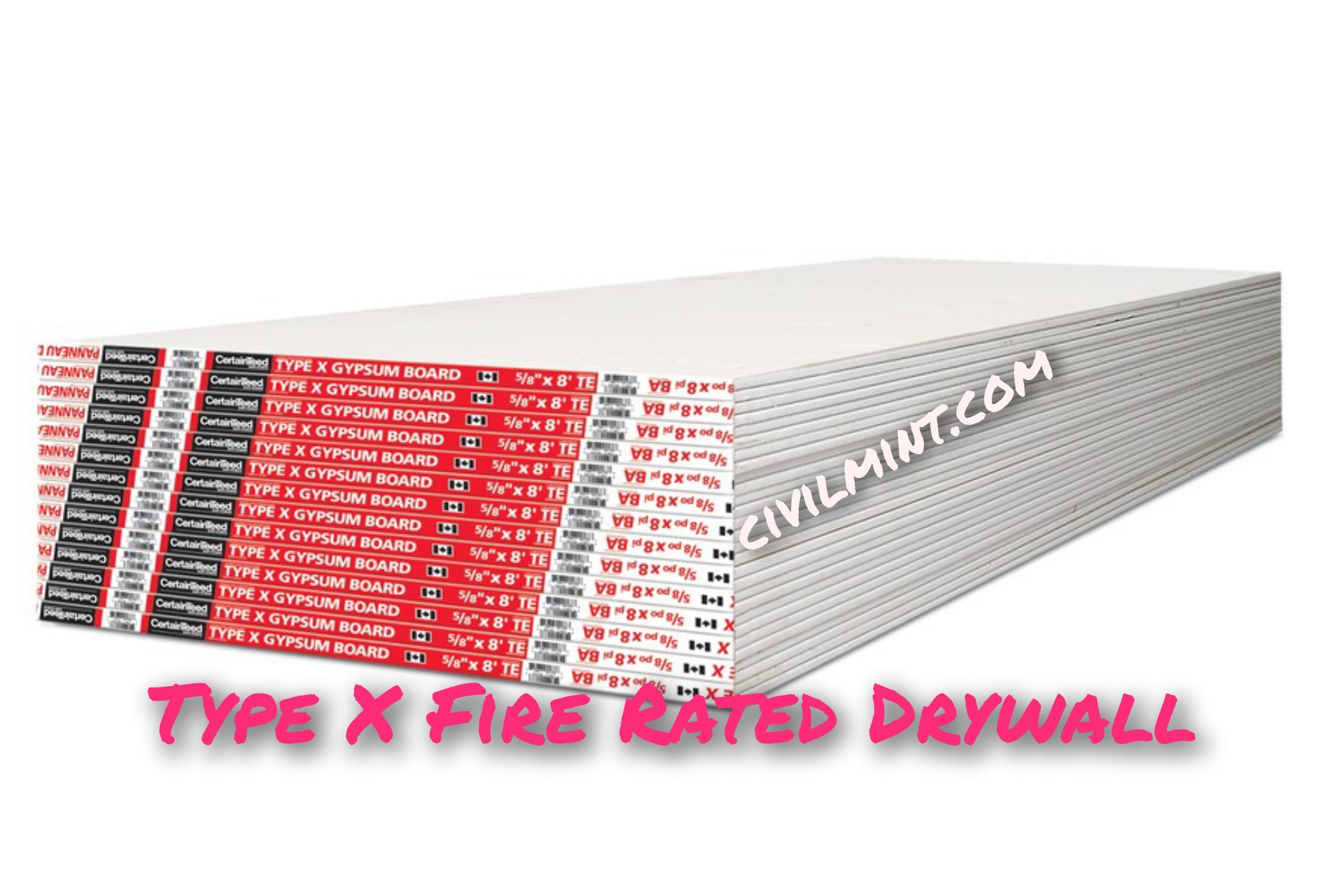Fire rated drywall is thicker than standard sheets and contains fiberglass additives in a gypsum core. This slows the progress of the fire, allowing occupants enough time to escape.

Table of Contents
What Is Fire Rated Drywall?
Fire resistance is a fundamental attribute of drywall, with all variants possessing this property. Drywall comprises a gypsum core, a non-flammable material composed of calcium sulfate dihydrate and water. Fire-rated drywall enhances this feature by introducing other non-flammable materials, such as glass fibers and minerals.
It’s important to note that the fire rating of drywall doesn’t necessarily apply to individual sheets of the material. Instead, it applies to an approved wall system, which includes the studs, hardware, and installation methods.
Types Of Fire Rated Drywall
There are two main types of fire rated drywall, which are Type X and Type C.
Type X drywall is the basic fire-rated drywall and contains the same gypsum material as standard drywall, but with added glass fibers for structural integrity during extreme heat. It is commonly used between garages and living spaces adjoining and above the garage. Type X drywall is available in 48-inch-wide sheets, up to 16 feet long, and is usually ⅝-inch thick. It is heavier than standard drywall due to the added glass, but two sheets of drywall totaling 1 ¼-inches thick can give the wall system a fire rating of up to 2 hours.
Type C drywall is an improved version of Type X with additional fire-resistant materials. When Type C drywall is exposed to extreme heat, the water contained within the gypsum core becomes steam and dissipates. However, instead of immediately shrinking, Type C drywall contains vermiculite, which expands under extreme heat, filling the space left by the evaporating water. Type C fire-rated drywall is available in standard sizes like Type X, but it is also available in ½-inch thicknesses to make it more manageable. It lasts longer than Type X drywall, with a single sheet lasting up to 2 hours.
Types Of Fire Rated Drywall
Fire-rated drywall is designed to resist the spread of fire and provide occupants with more time to evacuate in the event of a fire. Regular drywall, while non-combustible, is not completely impervious to the effects of heat. When exposed to high temperatures, the water in the gypsum core of regular drywall evaporates and causes the drywall to shrink and eventually crumble, which can take up to 30 minutes.
Type X and Type C drywall, on the other hand, are specially formulated with glass fibers and vermiculite in their gypsum core to slow down the crumbling process even further. These additional materials reinforce the structure of the drywall, making it less likely to crumble under heat, which allows it to stay intact for up to two hours, depending on the type.
It is essential to note that once the drywall panels crumble, the fire will spread through the wall. Additionally, fire-resistant drywall can only contain a fire within a space if there are no open doors or non-fire-rated openings such as doors or pass-throughs, as these can provide a pathway for the fire to spread to other areas.
Fire rated drywall is a specially formulated type of drywall that can resist the spread of fire for up to two hours. While it can provide additional time for occupants to evacuate, it is essential to ensure that there are no open doors or non-fire-rated openings in the space.
Uses
Some common uses of fire rated drywall are listed below.
- Walls and ceilings in corridors and stairwells
- Elevator shafts and mechanical rooms
- Garages and storage areas
- Any area where a fire could potentially start, such as kitchens or laundry rooms
- Buildings that are close to other buildings, such as townhouses or apartments, where fire can easily spread from one unit to another.
FAQ
Fire rated drywall is required in any building that has specific fire code regulations. It is primarily used as a passive fire protection system and is designed to help delay the spread of fire and protect the structural integrity of the building.
